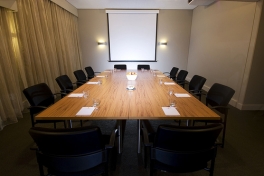Role of Culture, Behaviour and Psychological Biases in Boardrooms

Category:
Region:
Sector:
DUBLIN: 16 July 2013: There is increasing recognition of the importance for good corporate governance of hard-to-regulate features of organisations and their boards. This article examines the role of culture, behaviour and psychological biases in boardrooms, drawing particularly on Lloyd’s Report (2010) on risk and the Walker Report (2009) published after the banking crisis in the UK.
Influence of culture
Official organisational policies specify what management wants to happen (laws/rules on the books). Corporate culture determines what actually happens – which rules are obeyed, bent or ignored (“laws/rules in practice”). Lloyd’s (2010: 4) observes that “studies of disasters often indicate that the problem was not with the processes but that [the processes] were ignored or over-ruled”. Who is responsible for culture, the tone-at-the-top, in organisations? Many would point to the board’s role here. However, in practice, employees will tell you that the CEO has the greater influence. Lloyd’s consider the internal communications and behaviour of senior managers to be critical in setting the tone.
Features of boardrooms conducive to behavioural and psychological influences
Boards and board behaviour cannot be regulated; nor can they be managed by structure and controls. Behaviour is dynamic, evolves and depends on the organisational situation, strategic context and group dynamics. Our desires strongly influence our behaviour. Human beings are susceptible to social influence. As the Walker Report (2009: 139 & 142) comments: “Susceptibility to social influence is not a trait of those who lack will-power; it is hard-wired into all of us”, going on to say “Board members need to be schooled in group relations, power dynamics and the behaviours and processes that are required to maximise the intellectual capacity of the group”.
A number of boardroom features affect behavioural and psychological influences, including board size and the chairman.
Board size
Board size is important because of our cognitive limitations: there are a limited number of people with whom we can maintain stable relationships. Eight to 12 people can know each other well enough such that a group’s potential to integrate thinking is enhanced and the potential for dislocation (feeling of not belonging) is reduced. Conversely, large boards increase the opportunity for leadership to be controlling and political. Groupthink increases with larger groups, as groups’ motivation to achieve unanimity overrides their motivation to appraise alternative courses of action.
Board chairmen
Board chairmen are critical to board effectiveness: “[The chairman’s behaviour] is both the source and the result of an ability to mobilise others to share a vision of an anticipated future state of affairs, and a willingness to collaborate to bring it about...”. (Walker Report 2009: 141).
Cognitive biases
In 2011, the UK Financial Reporting Council implied the existence of bias in the boardroom for the first time using the phrase “distorted judgement”, acknowledging that flawed decisions can be made with the best of intentions and that competent individuals may believe passionately they are making sound judgements. Judgements of even the most well intentioned experienced leaders can, in certain circumstances, be distorted.
It is important to understanding social psychology. When we are motivated to reach a particular conclusion, we usually do. Bias is an inclination to present or hold a partial perspective at the expense of (possibly equally valid) alternatives. Sub-conscious or unconscious bias is hidden bias, implicit bias. Compared with deliberate conscious corruption, sub-conscious biased judgements cannot be regulated; cannot be deterred by threats of sanctions. Rooting out bias, or tempering its effects, will require more fundamental changes to the way boards operate.
Features of boardrooms conducive to bias
Company directing is a fertile ground for self-serving biases. There are a number of features of boardrooms that make them particularly conducive to bias, as identfied, among othersm by Bazarman, Loewenstein and Moore in 2002.
- Ambiguity – directing is an art, not a science and requires constant exercise of judgement.
- Attachment to company/management – in many boards, the non-executive directors do not meet the shareholders, but are interacting with, getting to know, establishing relationships with managers which makes monitoring more difficult.
- Approval – boards endorse or reject management’s choices: self-serving bias becomes even stronger when endorsing others’ biased judgements.
- Familiarity – people are more willing to harm strangers than individuals they know.
- Discounting – people are more responsive to immediate consequences than delayed ones. Boards may hesitate to implement tough decisions because the adverse consequences are immediate.
- Escalation – people conceal or wave away minor discretions: board biases may lead them to unknowingly adapt over time to small imperfections in management practices.
Mitigating the risk of sub-conscious biases
There are ways of mitigating or overcoming bias. The Financial Reporting Council recommends some steps to counteract distorted judgement:
- Executives putting their case at earlier stages, well in advance of the point of decision.
- Informing boards of the pre-boardroom processes adopted to arrive at and to challenge management proposals.
- Commissioning independent review of management proposals.
- Taking large decisions in stages.
- Deliberately introducing a devil’s advocate to provide challenge.
- Introducing automatic stops in decision making in the form of circuit breakers, mental breakers or calling for time-outs (an increasingly common feature of surgical theatres).
- Establishing a sole-purpose sub-committee, convening additional meetings.
- Recording the pros and cons of the decision in the minutes.
Concluding comment
A challenge for chairmen is to ensure that the dynamic in the boardroom enhances the quality of decision making by reducing the effects of sub-conscious bias. Chairmen should ensure that the boardroom atmosphere allows/encourages critical discussion. Consensus should not be the order of the day.
Acknowledgement: This article was written during a research visit to Australia funded by Queensland University of Technology, for which I am grateful and is based on a presentation delivered at Allen-Linklaters in Sydney on July 4, co-sponsored by the Centre for Law, Markets and Regulation.

